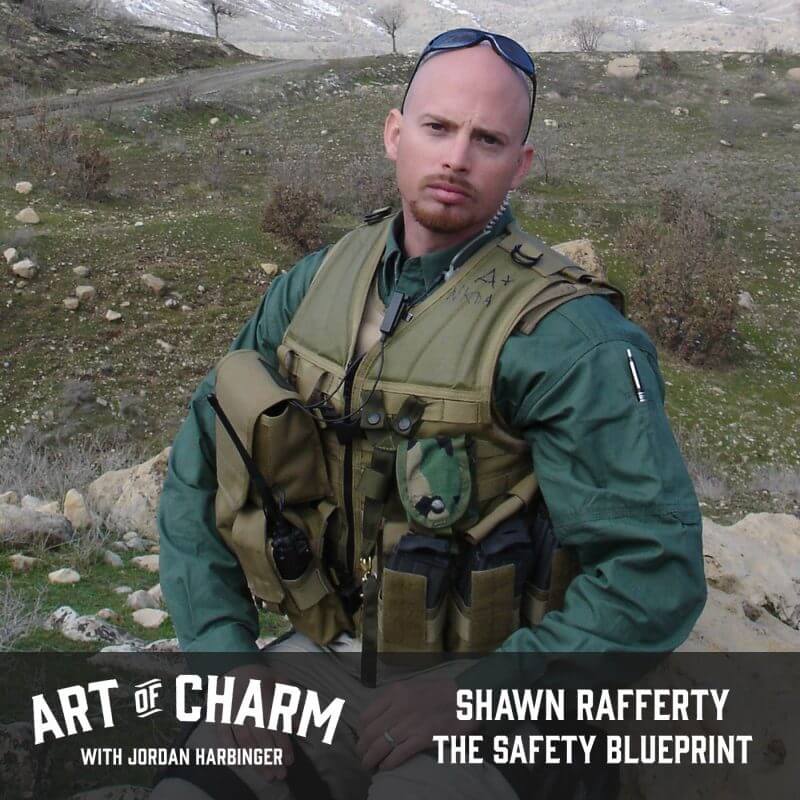Shawn Rafferty is here to show us how to harness the key principles of situational and observational awareness and making them a permanent part of our daily routine to avoid being victimized.
The Cheat Sheet:
- What’s more important than knowing how to react to a confrontation?
- Learning how to avoid danger is less of an investment of time and energy than learning how to fight — and more likely to keep you alive.
- What are the differences between situational and observational awareness?
- Even though we statistically live during the safest time in human history, cultivating a natural awareness of potential threats pays off more than willful blindness when bad people mark you as an easy target.
- Learn some tips for becoming a hard target.
- And so much more…
[aoc-subscribe]
Knowing how to defend yourself against those who mean harm to you or your loved ones is smart. But knowing how to avoid an altercation in the first place by successfully observing and gauging your surroundings is even smarter.
In episode 472 of The Art of Charm, Shawn Rafferty — personal protection coach and founder of The Safety Blueprint — is here to show us how practicing good situational and observational awareness allows us to notice potential threats with enough time and distance to either avoid them altogether (the best option) or react effectively.
More About This Show
With over 20 years of experience in security, Shawn Rafferty has been a Marine, an infantry instructor, a corrections officer, a police officer, a force protection officer, a security consultant, a security coordinator, a protective security specialist, a martial arts instructor, a firearms instructor, and a federal agent. Now he runs The Safety Blueprint, a company he started to educate organizations and individuals in being safer through situational awareness and cultivating a mindset conducive toward preventing trouble before it starts.
Not that there’s anything wrong with knowing martial arts or general self defense, but most people simply don’t have the time it takes to become proficient against every potential attacker — and whatever arsenal of weaponry they might present — during a direct assault.
“If you train martial arts or kickboxing,” says Shawn, “it takes years and years and years to develop how to punch and kick correctly, how to block, and all this and all that. But something like just opening your eyes up — getting your head out of your phone and paying attention — what that does is it opens your mind, first of all, and it helps you think.”
Even someone like Shawn, with a long resume that confirms an ability to physically take care of himself and others, knows the importance of being in control of a situation rather than being forced to react to it on someone else’s terms. “My whole career path has been based upon maneuvering away to avoid confrontation,” he says.
And while the odds of being involved in a life-threatening confrontation are still lower than what the fright-mongering media might have us believe, it’s still important to understand possible dangers we might face at home and abroad so we can be prepared for them. Shawn teaches us that situational awareness and observational awareness are key to being ready for anything.
Situational and Observational Awareness
Situational awareness involves being aware of your surroundings. You know where you are at all times. You know the layout of the buildings where you are — or, at the very least, where stairways and emergency exits are so you can escape if necessary.
Observational awareness means you pay attention to what’s going on around you at all times — particularly people around you and their actions.
“If you’re not thinking ahead — if you don’t have a plan in place, like, ‘If something happens here, I’m going to move over here; I’m going to hide behind this’ — what happens is you’re going to have a major, delayed effect,” says Shawn. This is a result of shock, because your brain is trying to process disbelief in a scenario you weren’t expecting. But learning situational and observational awareness primes you to be on guard for these kinds of scenarios so you’re not disabled by shock when the time comes to act.
“Initially,” says Shawn, “when you’re starting to learn how to do this, it’s kind of like you have to think that way all the time. And eventually, however long it takes you to develop this, naturally you’ll just kind of automatically do it. After that, after you’ve picked it up and made it a habit, you won’t have to concentrate on it so much.”
Hard Target Vs. Soft Target
Another strategy that becomes second nature with awareness and practice is making yourself a hard target as opposed to an easy, or soft target — which is made all the more desirable when you consider a criminal’s point of view.
“In the wild, a predator preys on the weak, right?” says Shawn. “They go for the young or the sick. Criminals are the same way. They’re going to go for the easiest prey they can because they don’t want to have to fight somebody to get what they want. This goes for a simple criminal; this goes for a terrorist who wants to commit a terrorist act. They’re…not going to attack a police station. That doesn’t make any sense. But they will attack some place where they know there’s a bunch of helpless victims, so to speak.”
Putting yourself in the villainous shoes of a would-be attacker, which target seems more worthy of your malevolent time and effort?:
The soft target: someone who slouches as they meander aimlessly down the street, nose buried in their phone and oblivious to anything happening offscreen, with earphones blasting out the latest hit single.
The hard target: someone who walks confidently down the street with their head swiveling to take in the surroundings, making eye contact with passers by, and obviously reacting to their environment in a way that shows they’re paying attention to what’s going on.
If you’re a smart villain, you’ll likely pick A. (Criminals generally get into their line of work to avoid — not gracefully face — the world’s big challenges.) And on the other side of it, if you’re a hard target paying attention to the people in your vicinity, you’ll learn to pick up on the habits of people who are sizing you up as a potential mark.
“They’re going to be nervous,” says Shawn. “They’re going to be perspiring. They’re going to be maybe moving around…looking around.” Unless they’re so professional at masking their intentions or they’re just straight-up psychopaths, they’ll usually stand out in some way that makes them suspicious — and you can learn to single these people out with enough practice.
Listen to this episode of The Art of Charm in its entirety to better learn the tenets of SAFE (Situational Awareness Focused Empowerment), why you should (and how you can) teach yourself how to lip read, pick up more pointers for becoming a hard target, where to position yourself in a public place to avoid active shooters, what you should know about concealing and covering yourself from firearms, why you should assume the worst when you think you’re hearing fireworks, what footwear designates you as a soft target, and lots more.
THANKS, SHAWN RAFFERTY!
You’ll also like:
On your phone? Click here to write us a well-deserved iTunes review and help us outrank the riffraff!




